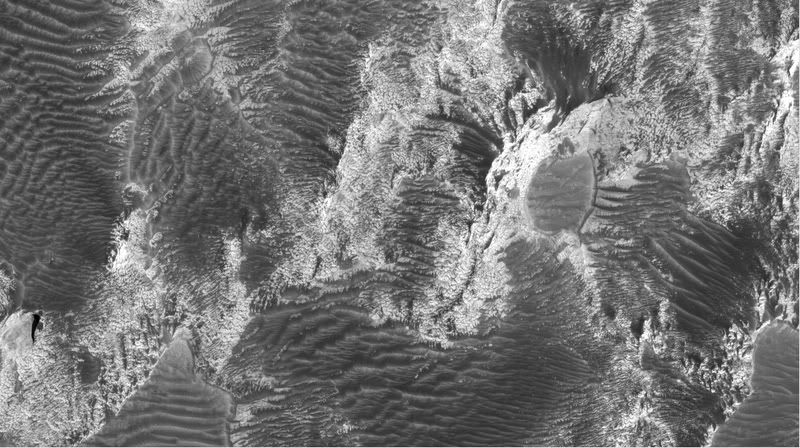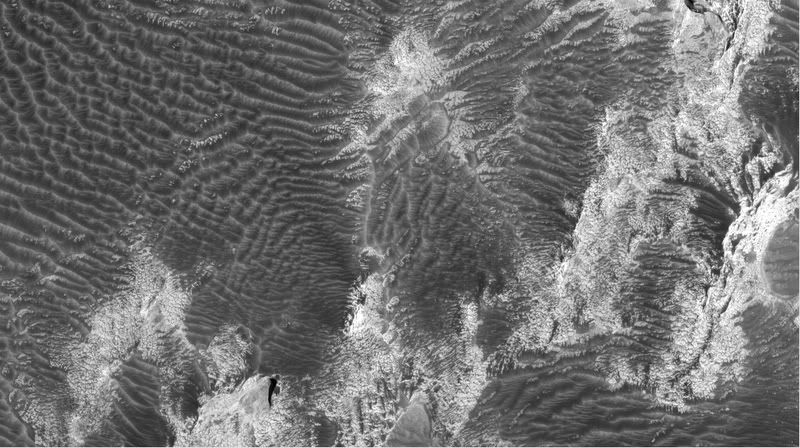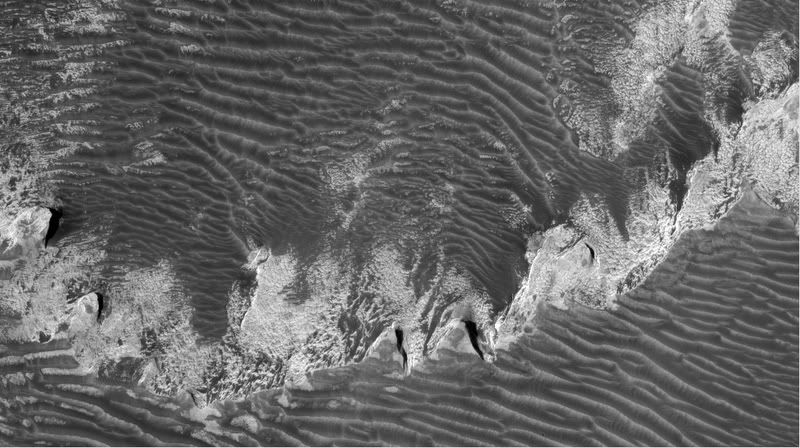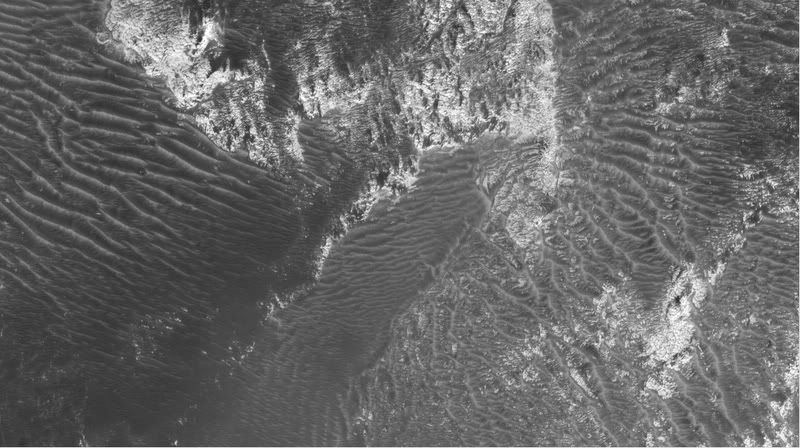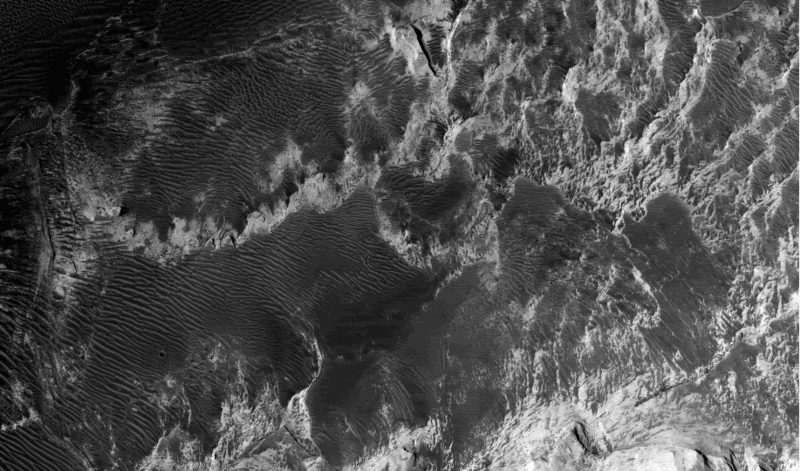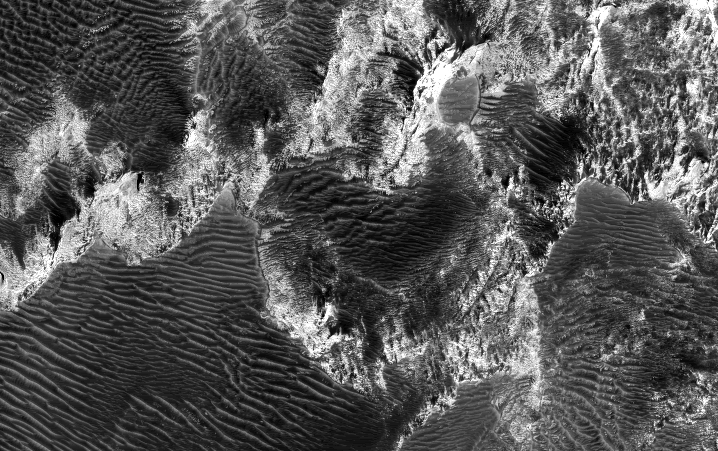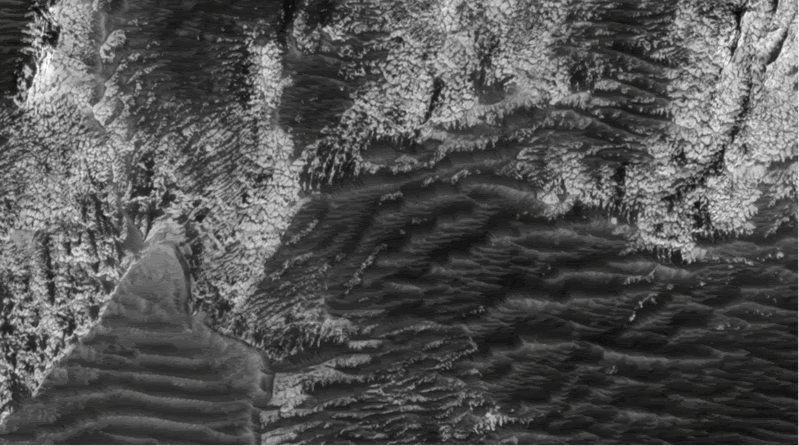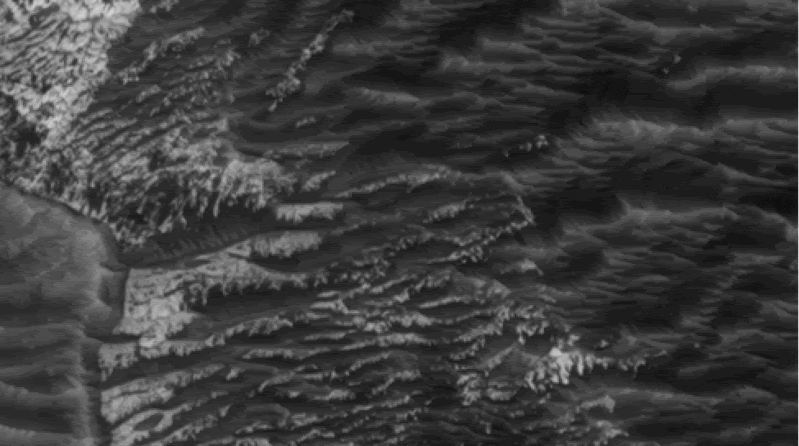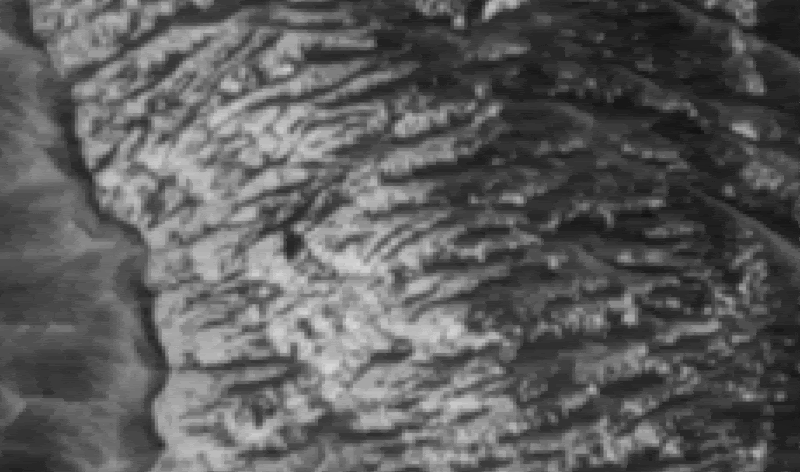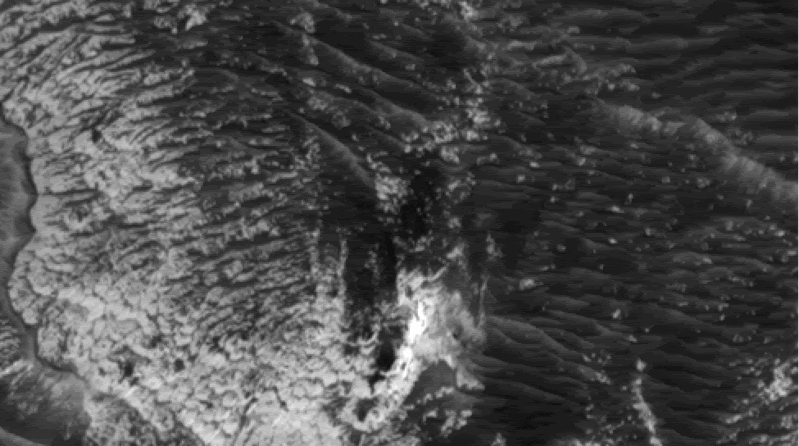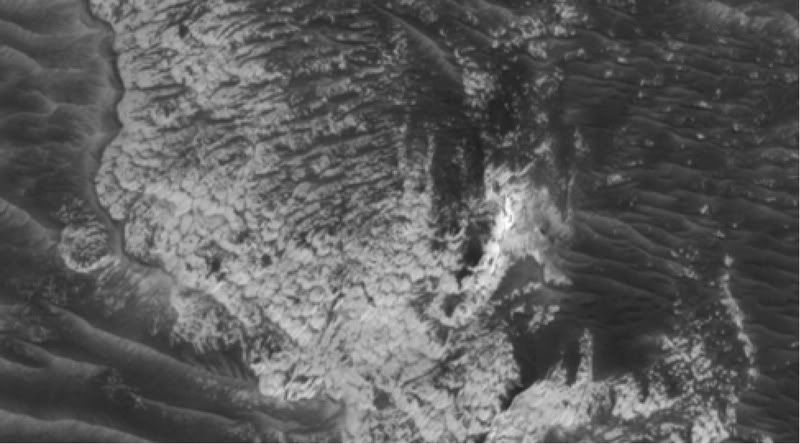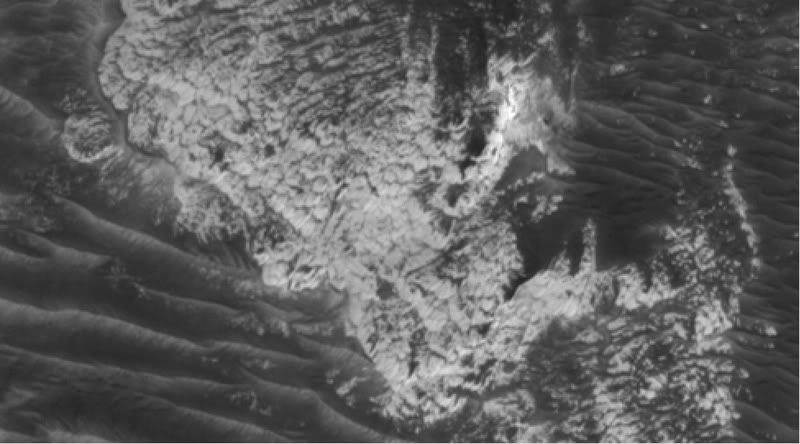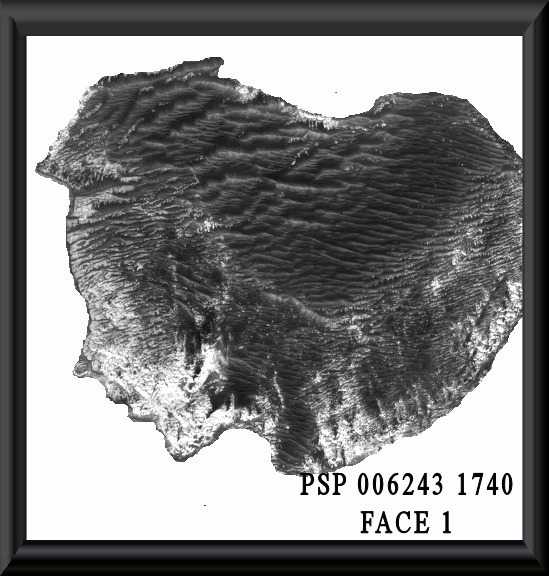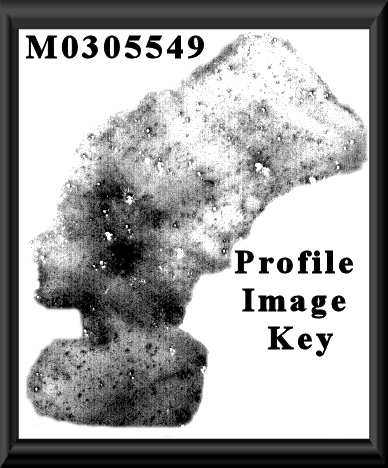- Thank you received: 0
Faces from the Chasmas
- neilderosa
-
- Offline
- Platinum Member
-

Less
More
16 years 6 months ago #20112
by neilderosa
Replied by neilderosa on topic Reply from Neil DeRosa
When I was visiting old friends recently at their home North Carolina I noticed something interesting. It was at a middle to up-scale community of 150 or so homes around a lake, and filled with "half backs," people who (many of which) had retired to Florida from the northeast and then moved half way back to this quaint community.
Why am I telling you this? Because the thing I noticed reminded me of this thread. What do intelligent (usually professional) people do when they have nothing left to do? They become artists of a sort. Most of them have no real talent, but they are all artists now. They spend their time searching the bazaars for art relics; they take art classes; they talk endlessly about art, that and gardening, which is a kind of art too.
I imagine that the remnants of Planet V (or ET) had nothing to do for thousands of years on their Outpost Mars; they were airborne and space-faring, but it costs money and long stretches of time to make the really big trips, so they spent most of their time hanging around Mars. They probably didn't have the resources or the numbers (population) to do any serious building; their shelters and facilities must have been for the most part underground. But after studying the terrain endlessly, they probably noticed many land features that if tweaked slightly, could be made to look like human faces (either theirs or ours; it doesn't matter for the purposes of this discussion). They probably had some type of nuclear power so laser "pencils" shot from above, from hovering craft, is not out of the question.
So they did their artwork for the same reasons and sometimes with the same lack of talent (though a few of the artworks are great art), as my friends in retirement in North Carolina. They were bored.
Why am I telling you this? Because the thing I noticed reminded me of this thread. What do intelligent (usually professional) people do when they have nothing left to do? They become artists of a sort. Most of them have no real talent, but they are all artists now. They spend their time searching the bazaars for art relics; they take art classes; they talk endlessly about art, that and gardening, which is a kind of art too.
I imagine that the remnants of Planet V (or ET) had nothing to do for thousands of years on their Outpost Mars; they were airborne and space-faring, but it costs money and long stretches of time to make the really big trips, so they spent most of their time hanging around Mars. They probably didn't have the resources or the numbers (population) to do any serious building; their shelters and facilities must have been for the most part underground. But after studying the terrain endlessly, they probably noticed many land features that if tweaked slightly, could be made to look like human faces (either theirs or ours; it doesn't matter for the purposes of this discussion). They probably had some type of nuclear power so laser "pencils" shot from above, from hovering craft, is not out of the question.
So they did their artwork for the same reasons and sometimes with the same lack of talent (though a few of the artworks are great art), as my friends in retirement in North Carolina. They were bored.
Please Log in or Create an account to join the conversation.
16 years 6 months ago #20050
by marsrocks
Replied by marsrocks on topic Reply from David Norton
Neil, you give a good example of one of the reasons why people do artwork. But don't forget that every individual has a different reason for doing art. Some artwork is done to honor events or historically important individuals. Some may be done out of pride, or as a status symbol (having expensive art in your home or featured on your land may be a mark of your social status). Some people have historically commissioned extravagant works of art for various reasons - religious, and otherwise. If intelligent people on earth have multiple reasons for producing artwork, I would presume the intelligent beings of any other planet would have as many different reasons as well.
As for the laser work, I have no idea. But I haven't seen any sign of it yet. Large scale excavation equipment may be just as good of an explanation. And even primitive manual labor can not be ruled out just yet. Don't forget the tens of thousands of effigy mounds constructed all over the planet earth by primitive tribal people here on earth using no equipment. And as for those, they may well be territorial markings as the reason why they were built.
Also, don't forget the power of tradition. If your primitive ancestors passed on the tradition of artistic landscape alteration, and that process continued as technology and ability continued, the reason for doing landform art may simply be that we do it simply because that is the way it has always been done.
Here is another possibility: One of the legends of Mars indicates something to the effect that the art was done as a kind of giant book in which the secret messages of life are hidden from the searcher and the thinker. In this event the King of Mars or even some government or ruler from a third planet may have had it done - even during a period in which Mars was not habitable.
It makes for interesting conversation, but we're getting way ahead of ourselves.
As for the laser work, I have no idea. But I haven't seen any sign of it yet. Large scale excavation equipment may be just as good of an explanation. And even primitive manual labor can not be ruled out just yet. Don't forget the tens of thousands of effigy mounds constructed all over the planet earth by primitive tribal people here on earth using no equipment. And as for those, they may well be territorial markings as the reason why they were built.
Also, don't forget the power of tradition. If your primitive ancestors passed on the tradition of artistic landscape alteration, and that process continued as technology and ability continued, the reason for doing landform art may simply be that we do it simply because that is the way it has always been done.
Here is another possibility: One of the legends of Mars indicates something to the effect that the art was done as a kind of giant book in which the secret messages of life are hidden from the searcher and the thinker. In this event the King of Mars or even some government or ruler from a third planet may have had it done - even during a period in which Mars was not habitable.
It makes for interesting conversation, but we're getting way ahead of ourselves.
Please Log in or Create an account to join the conversation.
- neilderosa
-
- Offline
- Platinum Member
-

Less
More
- Thank you received: 0
16 years 6 months ago #19943
by neilderosa
Replied by neilderosa on topic Reply from Neil DeRosa
<blockquote id="quote"><font size="2" face="Verdana, Arial, Helvetica" id="quote">quote:<hr height="1" noshade id="quote">It makes for interesting conversation, but we're getting way ahead of ourselves.[MR]
<hr height="1" noshade id="quote"></blockquote id="quote"></font id="quote">
Right, but it relates to what I'm doing, and the evidence, if it is viable, allows us to speculate. The description just given is a lead-in to my next post. [Neil]
(edited 4/26)
<blockquote id="quote"><font size="2" face="Verdana, Arial, Helvetica" id="quote">quote:<hr height="1" noshade id="quote">As for the laser work, I have no idea. But I haven't seen any sign of it yet. Large scale excavation equipment may be just as good of an explanation. And even primitive manual labor can not be ruled out just yet. <hr height="1" noshade id="quote"></blockquote id="quote"></font id="quote">
Yes, but I'm assuming in this model a dead planet with no breathable atmosphere and a very small remnant population, or alternatively very small numbers of ET's from another solar system. Though some extraordinary construction projects of hermetically sealed structures (to grow food?) and mining operations may have had to be done on the ground, most of the faces, if artificial must have been done with lasers or similar from above. Here is an example of how laser engraving is done on earth, (see link). www.kernlasers.com/
and here's a research paper on how it is done large scale.
www.princeton.edu/~globsec/publications/pdf/2_1Braid.pdf
<hr height="1" noshade id="quote"></blockquote id="quote"></font id="quote">
Right, but it relates to what I'm doing, and the evidence, if it is viable, allows us to speculate. The description just given is a lead-in to my next post. [Neil]
(edited 4/26)
<blockquote id="quote"><font size="2" face="Verdana, Arial, Helvetica" id="quote">quote:<hr height="1" noshade id="quote">As for the laser work, I have no idea. But I haven't seen any sign of it yet. Large scale excavation equipment may be just as good of an explanation. And even primitive manual labor can not be ruled out just yet. <hr height="1" noshade id="quote"></blockquote id="quote"></font id="quote">
Yes, but I'm assuming in this model a dead planet with no breathable atmosphere and a very small remnant population, or alternatively very small numbers of ET's from another solar system. Though some extraordinary construction projects of hermetically sealed structures (to grow food?) and mining operations may have had to be done on the ground, most of the faces, if artificial must have been done with lasers or similar from above. Here is an example of how laser engraving is done on earth, (see link). www.kernlasers.com/
and here's a research paper on how it is done large scale.
www.princeton.edu/~globsec/publications/pdf/2_1Braid.pdf
Please Log in or Create an account to join the conversation.
- neilderosa
-
- Offline
- Platinum Member
-

Less
More
- Thank you received: 0
16 years 6 months ago #19961
by neilderosa
Replied by neilderosa on topic Reply from Neil DeRosa
<blockquote id="quote"><font size="2" face="Verdana, Arial, Helvetica" id="quote">quote:<hr height="1" noshade id="quote"><b>Layering on Mars; science theme by Cathy Weitz </b> [HiRISE team]
Re: PSP 006243 1740 "Layering and Faulting in Layered Deposits in Candor Chasma"
"Mars, like the Earth, appears to be a layered planet, which has major implications for processes that have formed the geology we see today on the surface. Anyone who has ever gone to the Grand Canyon and seen the layering along the canyon walls may know that each layer records a different history for this region, such as a time in the past when the region was covered with a sea and sedimentary layers were emplaced, or a time when volcanism was active and produced volcanic layers. The arrangement of layers relative to each other, such as does one unit lie on top of another or does one layer cut through another, also tells us about the stratigraphy, which is how geologists determine the sequence of processes that occurred over time in a particular area.
HiRISE may show us that the layering on Mars is even thinner and more prevalent than we now know. HiRISE images of different layers on Mars can answer questions about the processes that produced the layers. For example, are the layers the result of sediments deposited in lakes or oceans on Mars? Do the layers form from volcanic eruptions pumping ash into the atmosphere that later settles on to the ground? Or perhaps the layers form from cyclic changes in the amount of dust that is entrained into the atmosphere and later deposited on the ground. Analysis of HiRISE data may shed new insight into the physical properties and age relationships of the layers which can then help scientists determine how the layers formed and what role water and climate change played in their deposition."
<hr height="1" noshade id="quote"></blockquote id="quote"></font id="quote">
Here are some examples of obvious layering from 6234 1740 taken from context segments cropped around the profile face we will call "Cathy" to differentiate her from other female profile faces. Geologists could tell us which layers are the results of sediment, which are from mud flows, and which from lava flows; some may even be settled volcanic dust. The point here is that the natural contrasts of the layers form the backdrop from which the artist took his or her cue, and added detail, shading, highlights, borders, and so on (in our model).
Context 4
Context 5
Context 6
Context 7
Context 1 with Cathy centered
Context 2 with Cathy centered
Re: PSP 006243 1740 "Layering and Faulting in Layered Deposits in Candor Chasma"
"Mars, like the Earth, appears to be a layered planet, which has major implications for processes that have formed the geology we see today on the surface. Anyone who has ever gone to the Grand Canyon and seen the layering along the canyon walls may know that each layer records a different history for this region, such as a time in the past when the region was covered with a sea and sedimentary layers were emplaced, or a time when volcanism was active and produced volcanic layers. The arrangement of layers relative to each other, such as does one unit lie on top of another or does one layer cut through another, also tells us about the stratigraphy, which is how geologists determine the sequence of processes that occurred over time in a particular area.
HiRISE may show us that the layering on Mars is even thinner and more prevalent than we now know. HiRISE images of different layers on Mars can answer questions about the processes that produced the layers. For example, are the layers the result of sediments deposited in lakes or oceans on Mars? Do the layers form from volcanic eruptions pumping ash into the atmosphere that later settles on to the ground? Or perhaps the layers form from cyclic changes in the amount of dust that is entrained into the atmosphere and later deposited on the ground. Analysis of HiRISE data may shed new insight into the physical properties and age relationships of the layers which can then help scientists determine how the layers formed and what role water and climate change played in their deposition."
<hr height="1" noshade id="quote"></blockquote id="quote"></font id="quote">
Here are some examples of obvious layering from 6234 1740 taken from context segments cropped around the profile face we will call "Cathy" to differentiate her from other female profile faces. Geologists could tell us which layers are the results of sediment, which are from mud flows, and which from lava flows; some may even be settled volcanic dust. The point here is that the natural contrasts of the layers form the backdrop from which the artist took his or her cue, and added detail, shading, highlights, borders, and so on (in our model).
Context 4
Context 5
Context 6
Context 7
Context 1 with Cathy centered
Context 2 with Cathy centered
Please Log in or Create an account to join the conversation.
- neilderosa
-
- Offline
- Platinum Member
-

Less
More
- Thank you received: 0
16 years 6 months ago #19964
by neilderosa
Replied by neilderosa on topic Reply from Neil DeRosa
<blockquote id="quote"><font size="2" face="Verdana, Arial, Helvetica" id="quote">quote:<hr height="1" noshade id="quote"> after studying the terrain endlessly, they probably noticed many land features that if tweaked slightly, could be made to look like human faces. They probably had some type of nuclear power so laser "pencils" shot from above, from hovering craft, is not out of the question.
<hr height="1" noshade id="quote"></blockquote id="quote"></font id="quote">
I realize that this argument can always be countered by the pareidolia argument and all the pro-artificiality arguments have been made repeatedly in this thread, the MRO First Look thread, the T or E thread, and the Elaborate Pareidolia thread, to name a few. The artificiality hypothesis hinges on three things IMO: 1 that elaborate pareidolia is either impossible or extremely rare; if so then natural occurring faces with good proportion, detail, feature orientation or positioning, shading and highlighting, similarity to humans or known animals, and so on, can be ruled out as a reasonable possibility. 2- There have been good suggestions of mechanical / structural objects, not faces, found in the MGS MOC images, if any of these are convincingly corroborated in a HiRISE image, that would be strong evidence in favor of the hypothesis. 3- The third possibility is that one or more of the best previously imaged faces with the best detail (etc.) may be so compelling upon high resolution imaging that it alone would go along way toward settling the issue. The proposed re-imaging of the Nefertiti Profile is a prime candidate in this regard. In the meantime I will present evidence which seems to suggest the type of construction of these art works suggested above. Here are details of the present (Cathy) profile:
Top of head denoting straight line separating hair from background, hairline separating brow and forehead from hair, hair texture, lined forehead, and highlight shading on forehead.
Number: 1
2
Forehead, eye detail (note crescent-shaped iris from side view and three slanted top eyelashes), hairline, sideburns with curved construction marks running counter to the natural terrain, and blush shading similar to the Nefertiti Profile (below).
3
4
5
Nose and chin area, note broken nose tip, chin outline, well defined mouth, and highlighting.
6
7
[Edited 5/4/08, 11:AM]
To facilitate the description, I have numbered the images above. Images number 1 and 2 both show the "forehead/face" area and the "hair" area. It seems obvious that these two (proposed artificial) areas are both composed of the same natural layer, and that the "hair" represents what the terrain looks like naturally. In no. 1 the border between the "hair" and the surrounding terrain is marked by a clear light/dark contrast. It is as if the laser pencil removed the background like I do with my keys. Perhaps it is simply a matter of disturbing the surface crust a few centimeters thick and the exposed rock will appear lighter toned. In no. 2, the border between the "hair" and "forehead" is marked by the indent of a thicker dark line, within which we can see the same cross striations common in the "hair section." This is clear evidence that the "forehead" section and the "hair" section are both part of the same natural layer, but that the "forehead" section has been disturbed while the "hair" section has been left undisturbed. Whether that disturbance was natural or artificial is of course the question. But Im suggesting that the combination of coincidences and the apparent selective alteration of the terrain suggest artificiality. There are many other similar examples.
Cathy Profile Key
Nefertiti Profile Key
<hr height="1" noshade id="quote"></blockquote id="quote"></font id="quote">
I realize that this argument can always be countered by the pareidolia argument and all the pro-artificiality arguments have been made repeatedly in this thread, the MRO First Look thread, the T or E thread, and the Elaborate Pareidolia thread, to name a few. The artificiality hypothesis hinges on three things IMO: 1 that elaborate pareidolia is either impossible or extremely rare; if so then natural occurring faces with good proportion, detail, feature orientation or positioning, shading and highlighting, similarity to humans or known animals, and so on, can be ruled out as a reasonable possibility. 2- There have been good suggestions of mechanical / structural objects, not faces, found in the MGS MOC images, if any of these are convincingly corroborated in a HiRISE image, that would be strong evidence in favor of the hypothesis. 3- The third possibility is that one or more of the best previously imaged faces with the best detail (etc.) may be so compelling upon high resolution imaging that it alone would go along way toward settling the issue. The proposed re-imaging of the Nefertiti Profile is a prime candidate in this regard. In the meantime I will present evidence which seems to suggest the type of construction of these art works suggested above. Here are details of the present (Cathy) profile:
Top of head denoting straight line separating hair from background, hairline separating brow and forehead from hair, hair texture, lined forehead, and highlight shading on forehead.
Number: 1
2
Forehead, eye detail (note crescent-shaped iris from side view and three slanted top eyelashes), hairline, sideburns with curved construction marks running counter to the natural terrain, and blush shading similar to the Nefertiti Profile (below).
3
4
5
Nose and chin area, note broken nose tip, chin outline, well defined mouth, and highlighting.
6
7
[Edited 5/4/08, 11:AM]
To facilitate the description, I have numbered the images above. Images number 1 and 2 both show the "forehead/face" area and the "hair" area. It seems obvious that these two (proposed artificial) areas are both composed of the same natural layer, and that the "hair" represents what the terrain looks like naturally. In no. 1 the border between the "hair" and the surrounding terrain is marked by a clear light/dark contrast. It is as if the laser pencil removed the background like I do with my keys. Perhaps it is simply a matter of disturbing the surface crust a few centimeters thick and the exposed rock will appear lighter toned. In no. 2, the border between the "hair" and "forehead" is marked by the indent of a thicker dark line, within which we can see the same cross striations common in the "hair section." This is clear evidence that the "forehead" section and the "hair" section are both part of the same natural layer, but that the "forehead" section has been disturbed while the "hair" section has been left undisturbed. Whether that disturbance was natural or artificial is of course the question. But Im suggesting that the combination of coincidences and the apparent selective alteration of the terrain suggest artificiality. There are many other similar examples.
Cathy Profile Key
Nefertiti Profile Key
Please Log in or Create an account to join the conversation.
16 years 6 months ago #20052
by rderosa
Replied by rderosa on topic Reply from Richard DeRosa
<blockquote id="quote"><font size="2" face="Verdana, Arial, Helvetica" id="quote">quote:<hr height="1" noshade id="quote"><i>Originally posted by neilderosa</i>
<br />1.) I realize that this argument can always be countered by the pareidolia argument <hr height="1" noshade id="quote"></blockquote id="quote"></font id="quote">Exactly.
<blockquote id="quote"><font size="2" face="Verdana, Arial, Helvetica" id="quote">quote:<hr height="1" noshade id="quote">that elaborate pareidolia is either impossible or extremely rare; if so then natural occurring faces with good proportion, detail, feature orientation or positioning, shading and highlighting, similarity to humans or known animals, and so on, can be ruled out as a reasonable possibility<hr height="1" noshade id="quote"></blockquote id="quote"></font id="quote">The problem with this statement is twofold.
One, your logic is flawed because you are starting at the conclusion and working backwards (I forgot the term for that, other than "self-fullfilling"). Because you think your artworks are "natural occurring faces with good proportion, detail, feature orientation or positioning, shading and highlighting, similarity to humans or known animals" and can't be pareidolia, you conclude: therefore they can't be pareidolia. You still don't (after all this time) have anything independent of this self-fullfilling theory to base that statement on.
And two, because you've never actually studied pareidolia in and of itself, you are stuck in a situation where you can't see the forest for the proverbial trees.
You realize Trinket's stuff is probably pareidolia, but don't realize that the only difference between his stuff and yours is one of style and "technique" so to speak. You're two different types of artists, so you find different types of images.
It is very apparent that the only thing that's going to resolve this is if somebody finds an ancient Rolex in the sand. There are simply too many ways to continue to rationalize what we see, depending upon the point of view. The Skullface example I used at the beginning of the Pareidolia Thread is a good example of how the argument doesn't get resolved at higher resolutions. One person concludes it (the AOH) got blown out of the water, while another person concludes it's because of acid rain and millions of years of erosion.
There are simply too many ways to continue to carry on the debate, because there are no real metrics to tell for sure. I know GOrme would dispute this statement, but after spending a week reading his analysis of the King Face region, I still walked away unconvinced.
Basically, all you're doing now, and have been since the beginning is saying that in your case you're so capable of seeing "real" faces that yours <b>must be </b> artworks and not pareidolia, whereas everyone else's faces are not "up to snuff" and therefore <b>must be </b> pareidolia.
In my not so humble opinion, you are engaging in a self-fullfilling fantasy, with no substance.
I'm sure Tom is not thrilled about the stalemate in this particular subject, so I'll leave it at that.
rd
<br />1.) I realize that this argument can always be countered by the pareidolia argument <hr height="1" noshade id="quote"></blockquote id="quote"></font id="quote">Exactly.
<blockquote id="quote"><font size="2" face="Verdana, Arial, Helvetica" id="quote">quote:<hr height="1" noshade id="quote">that elaborate pareidolia is either impossible or extremely rare; if so then natural occurring faces with good proportion, detail, feature orientation or positioning, shading and highlighting, similarity to humans or known animals, and so on, can be ruled out as a reasonable possibility<hr height="1" noshade id="quote"></blockquote id="quote"></font id="quote">The problem with this statement is twofold.
One, your logic is flawed because you are starting at the conclusion and working backwards (I forgot the term for that, other than "self-fullfilling"). Because you think your artworks are "natural occurring faces with good proportion, detail, feature orientation or positioning, shading and highlighting, similarity to humans or known animals" and can't be pareidolia, you conclude: therefore they can't be pareidolia. You still don't (after all this time) have anything independent of this self-fullfilling theory to base that statement on.
And two, because you've never actually studied pareidolia in and of itself, you are stuck in a situation where you can't see the forest for the proverbial trees.
You realize Trinket's stuff is probably pareidolia, but don't realize that the only difference between his stuff and yours is one of style and "technique" so to speak. You're two different types of artists, so you find different types of images.
It is very apparent that the only thing that's going to resolve this is if somebody finds an ancient Rolex in the sand. There are simply too many ways to continue to rationalize what we see, depending upon the point of view. The Skullface example I used at the beginning of the Pareidolia Thread is a good example of how the argument doesn't get resolved at higher resolutions. One person concludes it (the AOH) got blown out of the water, while another person concludes it's because of acid rain and millions of years of erosion.
There are simply too many ways to continue to carry on the debate, because there are no real metrics to tell for sure. I know GOrme would dispute this statement, but after spending a week reading his analysis of the King Face region, I still walked away unconvinced.
Basically, all you're doing now, and have been since the beginning is saying that in your case you're so capable of seeing "real" faces that yours <b>must be </b> artworks and not pareidolia, whereas everyone else's faces are not "up to snuff" and therefore <b>must be </b> pareidolia.
In my not so humble opinion, you are engaging in a self-fullfilling fantasy, with no substance.
I'm sure Tom is not thrilled about the stalemate in this particular subject, so I'll leave it at that.
rd
Please Log in or Create an account to join the conversation.
Time to create page: 0.351 seconds

